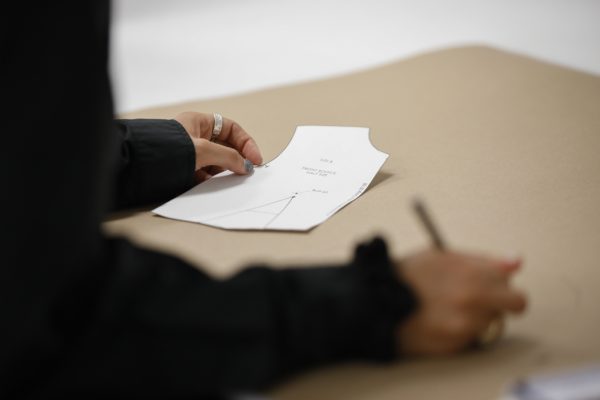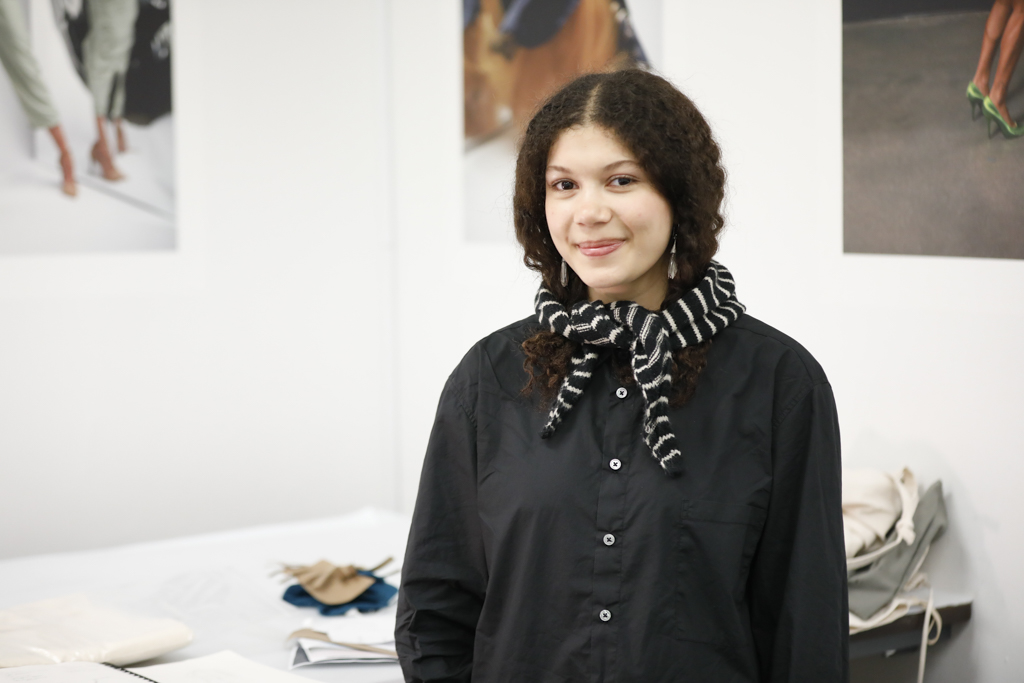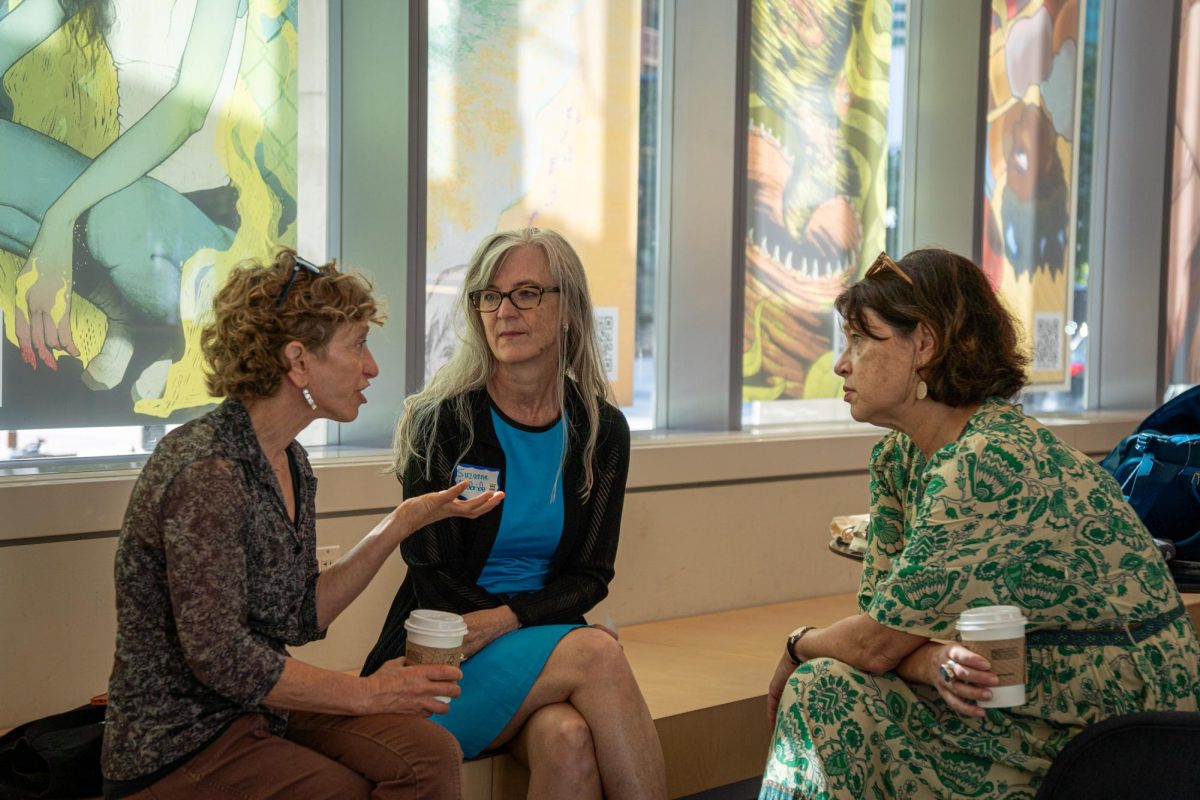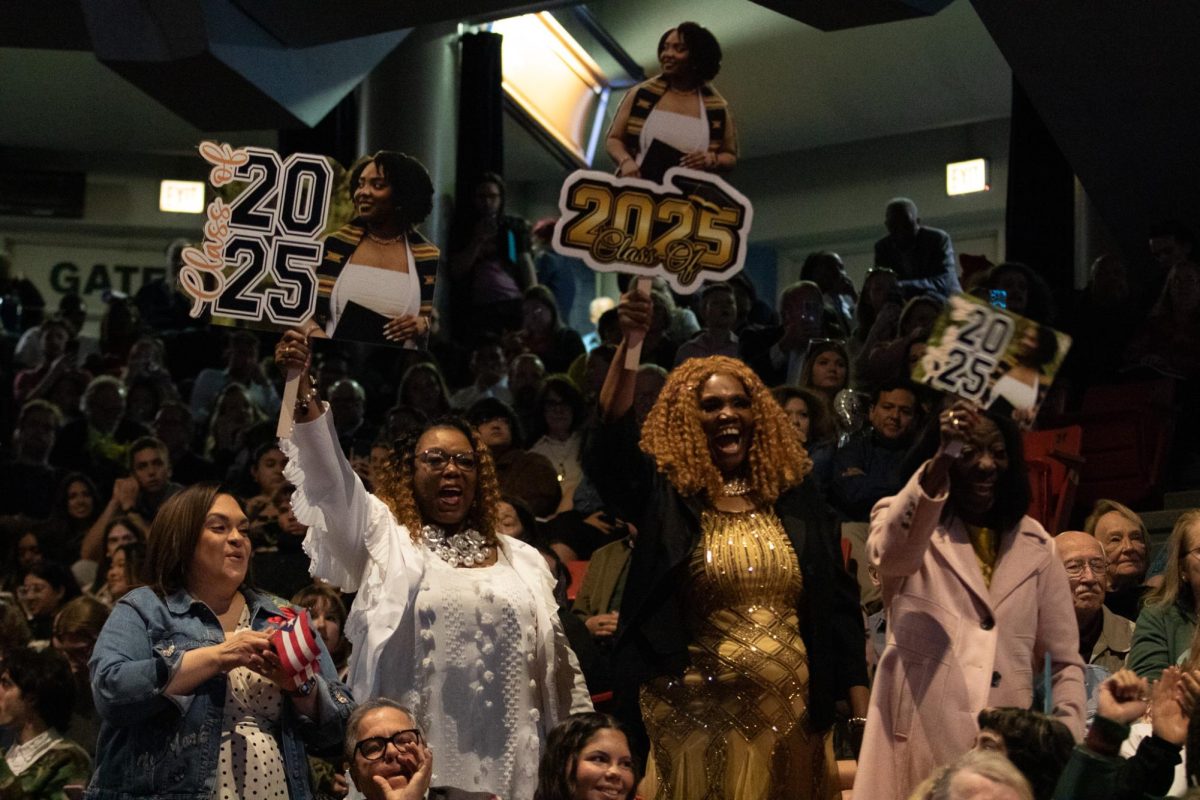For the last academic year, junior fashion design BFA student Lizzy Fowlkes has been designing her own looks, from drawings to finalized garments. Expanding upon ideas of ergonomics and community, Fowlkes explores sustainability through a lens galvanized since her childhood.
“I think my main inspiration, pretty much my whole life, was my grandmother,” said Fowlkes, who is minoring in sustainable fashion. “She had a linen shop in my hometown in Memphis. So I grew up around clothing, and I grew up around natural fibers and things like that, and taking care of your clothes, and learned a lot of that from her .”
Her grandmother, June Taylor, owned a boutique, Lou Dean’s, and was a host to smaller designers who often were sustainable in their practices.
Since the store’s establishment in 1977, clothing and its craft has been at the forefront. The store originally served as a way to display the homemade goods Taylor’s mother made, such as simple skirts and skirts, but quickly expanded into vintage and resale.
Taylor said when Fowlkes was about five or six she first asked her help in creating something, a coin purse. “I said, ‘Elizabeth…zippers are hard to put in. They’re really hard.’ And she said, ‘Well, I’ll sew them by hand.’ And she did,” Taylor said. From there Fowlkes’ proficiency on a sewing machine grew as she began to sell them at the shop.
A familial love for fabric was instilled from an early age, as high quality was always sought out and stocked in their store.
I thrifted because we loved the fabric, and my mother could turn a piece of fabric into whatever we wanted,” said Taylor. “And Lizzy learned to do that early on.”
Fowlkes’ pieces take these roots of sustainable practices and fully implements them, showcasing her time as a designer. “My collection that I’m designing for right now is still a working title, but right now it’s ‘Never Completely Yours.’ And I toyed around with that title because ‘never’ seemed super exclusionary, and I didn’t really want it to feel exclusionary, because it’s supposed to be gender neutral and kind of ageless,” Fowlkes said.

Fowlkes created a jacket and a pair of pants, both constructed from natural fibers like cotton and twill. These were selected for their durability and sustainability. Dyed a neutral color, these garments were designed from the ground up to embrace neutrality and adaptability. The pants allow for the waist to be changed from user to user through an extra three inches of waistline that can be adapted. The top demonstrates inclusive design through its cinched waist and raglan sleeves which allow for more body shapes.
Her inspiration for her garments was a focus on intuitive design as well as an emphasis on natural fibers. “I think just emphasizing that functionality, as well as making it fit multiple bodies, was something that I really wanted to hone in on,” Fowlkes said. In addition to sizing, the ergonomic design included functionality as well as an expansion upon a running thread between all of Fowlkes’ work, community.
“This idea of community-based clothing and having something be not just for one person or not just for one use, is something that’s really important, and it emphasizes sustainable aspects of design,” said Fowlkes.
Inspired by the waste cycles of clothing, Fowlkes thought why not dispose of items sideways, as opposed to downwards, thus stopping clothing from entering the landfill. As reported by PIRG, 92 million tons of clothing are sent to landfills each year globally, largely fueled by fast fashion.
“I think that was really interesting to see her arrive at that point,” said Lauren Peters, associate professor of fashion studies and director of the Fashion Study Collection at Columbia.
I think she recognizes that there really is no ethical consumption under capitalism, in many ways. And the most sustainable way for us to engage with fashion and our wardrobes is to wear what we have and love what we have and not consume more,” Peters said.
Fowlkes’ wares argue that creating a garment that serves a purpose and lasts, is sustainable in its own right.
“We’re not wearing something once and then having it be buried at the bottom of our closets. We’re wearing it, making memories in it, passing it on for others to make memories in too, and I think that’s really important,” said Fowlkes.
Jacob Victorine, Practitioner-in-Residence at Columbia’s School for Fashion, said that clothes have existed this way throughout culture and time, and still does exist that way at times in American culture.
“In terms of hand-me-down’s, which I think is most common with siblings, but I think we could chalk up thrift or vintage shopping in that area,” Victorine said. “I think that Lizzy is taking a more intentional approach. In the sense that her clothing, in some way, is acknowledging that our relationship with clothing is temporary, and our relationship with life is temporary, like we’re only on the earth for a very short period of time, and sometimes well-made clothing will outlast us.”
Fowlkes says that focusing on quality over quantity really allows designers to hone in a niche, and currently functionality as well as zero waste design, a process where patterns are designed with the entire fabric in mind, are the building blocks of her fashion.
Fowlkes extends these sustainable practices to using reclaimed materials, a practice facilitated by Chicago establishments like the Waste Shed, a store selling exclusively donated functional items at a fraction of the cost.
“We already have so much stuff created just in general, already,” Fowlkes said. “The fashion industry is one of the biggest polluters, therefore we have tons of materials that have just not been in use.”
In the last 20 years, global fibre production has almost doubled from 58 million tonnes in 2000 to 116 million tonnes in 2022, and is expected to grow to 147 million tonnes in 2030, according to the Textile Exchange,
Fowlkes encouraged designers and consumers alike to embrace repurposing to help combat these statistics.
“Even if it’s incorporating mismatch buttons in my garments, or different zippers. I still think it gives the garments, not only like a recycled aspect, but a flare. You know, they tell their own story,” Fowlkes said.
Fowlkes will continue to develop these ideas next semester, where it will be shown amongst other students in the School of Fashion at Manifest.
“I think sustainability is something that if you’re not doing it in the industry, then kind of, what are you doing? That sounds kind of harsh, but I think that there’s a time and place for things that are just, like, pretty or just art. But I think day-to-day clothes need to be on the sustainable side,” said Fowlkes.
Peters said that Columbia’s School of Fashion prides itself on instilling students with sustainable frames of thinking, ideas which had already found their way into Fowlkes’ design process.
“I think we all play a part in what our environment is going to look like in the future, and I think it’s almost unfair to not think sustainably today, knowing what we know,” said Fowlkes.
Copy edited by Trinity Balboa









